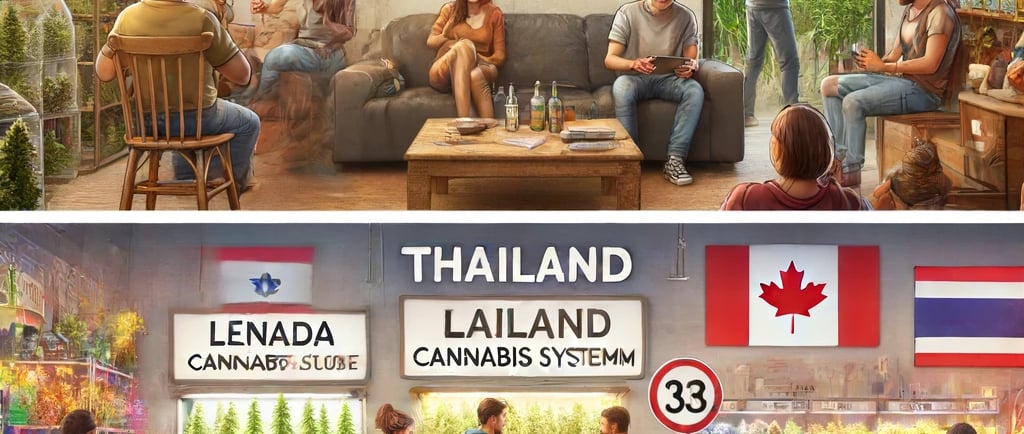It’s Illegal, but It’s Legal
The issue of cannabis legalization remains one of the most debated topics worldwide. Different countries adopt various approaches to regulating the use, cultivation, and sale of cannabis, creating legally ambiguous situations. In this article, we will examine how different countries handle this issue, with a particular focus on Spain, where cannabis clubs occupy a grey area between legality and illegality. We will also compare the Spanish model with approaches taken in Canada and Thailand and propose possible solutions for Spain.
CANNABIS GUIDE
6/18/20241 min read


The Situation in Spain
In Spain, cannabis is officially illegal, yet numerous cannabis clubs operate in a legal grey area. These clubs function as non-profit associations where members can grow and consume cannabis. Formally, clubs exist on a donation-based system, which allows them to circumvent laws against the direct sale of drugs. Tourists and new members register with the clubs, make donations, and receive "points" in return, which can be exchanged for cannabis.
However, this system creates many problems. Firstly, it is not adequately regulated, leading to criticisms from law enforcement agencies. Secondly, the lack of a clear legal framework results in numerous legal battles and conflicts with authorities. This creates an unstable situation for all parties involved: the clubs, their members, and the state.
The Example of Canada
Canada legalized cannabis in 2018, becoming one of the first major countries to take such a step. Canada developed a licensing system that allowed stores to officially sell cannabis. These stores pay taxes and are subject to strict state regulation. Legalization has led to increased budget revenues from taxes and created a controlled and safe environment for consumers.
The Example of Thailand
Thailand long had some of the harshest drug laws, including the death penalty for possession and sale of cannabis. However, in recent years, the country has dramatically changed its policy, legalizing cannabis for medical and recreational purposes. Cannabis is now available in official stores, attracting numerous tourists and providing an additional source of revenue for the state.
Analysis and Discussion
The Spanish model, while allowing certain freedoms for cannabis clubs, remains too ambiguous and causes many problems. The approaches of Canada and Thailand demonstrate that legalization with clear rules and taxation can lead to positive outcomes.
For Spain, it would be more sensible to follow the path of Canada or Thailand. Legalization and licensing of cannabis would allow:
Creation of a transparent and stable legal framework for clubs.
Improvement in safety and product quality for consumers.
Increase in tax revenues for the budget.
Reduction of the burden on the judicial system and law enforcement agencies.
Conclusion
Legalizing cannabis in Spain with the creation of a licensing system similar to Canada’s could solve many current problems. It would allow the state to control the activities of cannabis clubs, receive additional tax revenues, and create a safe environment for consumers. Ultimately, such a step would benefit both the state and society as a whole.
